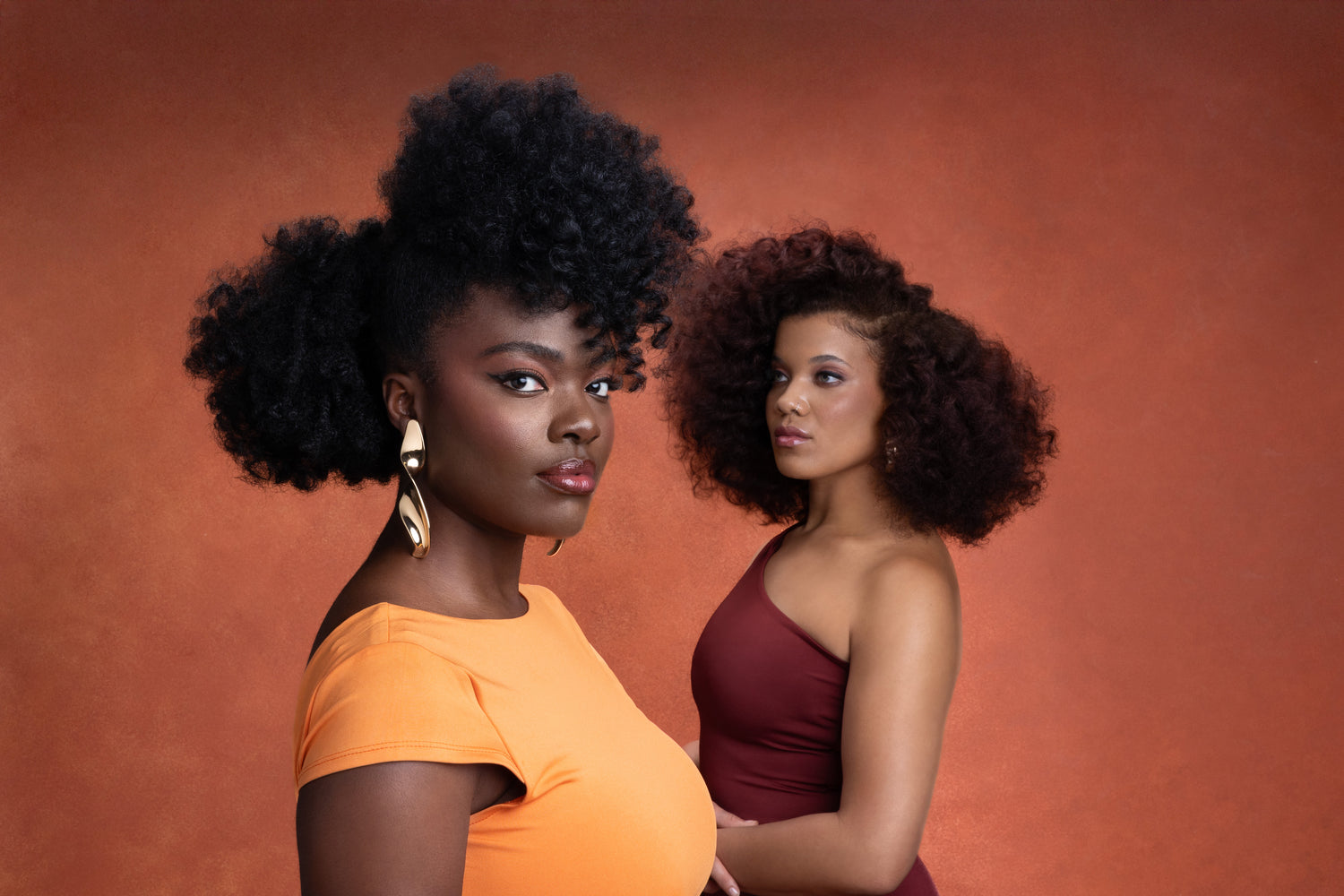A hair relaxer is a cream-like treatment that is typically used to chemically 'relax'/straighten curls and afro hair (hence the term hair relaxer).
For over a century, relaxers have played an integral part of black women’s hair experience. However people have recently become aware of the huge health risks related to relaxer use and things are changing.
Many people still love the look of hair that stays straight and there is a common misconception that relaxing your hair will make your hair grow faster.
However, straight hair tends to look longer than afro or curly hair because of the difference between their shapes. Which is why many are misled to think that relaxing your hair will make it grow even faster, when in fact, it's just that the hair growth is more visible.
The Process of Relaxing Your Hair
The first stage is to protect the scalp with a thick emulsion as it prevents skin irritation which can lead to skin burns.
Then, a thick, alkaline cream is applied on a hair section. The hair expert should not stretch the hair or reapply the cream on the already-treated hair.
This is followed by thorough rinsing and washing the hair with a neutralising shampoo.
Finally, you get straight, relaxed hair.
The process sounds easy as well. However, by digging harder you can see that the thick alkaline cream is not as safe as the process sounds.
How Do Hair Relaxers Work?
The raw materials used when relaxing your hair have a much higher pH than the agents used in dying hair which are already high (~ pH 9-10).
A relaxing cream has a pH 12-14 (which is as alkaline as a drain cleaner, by the way!).
The higher pH allows the cuticle scales to open up and for the cuticle to swell excessively. As a result, the relaxing ingredients of the cream can efficiently (although, harshly) penetrate the hair shaft.
Such materials include Thio (Amonium Thioglycolate), lye ( Sodium Hydroxide) and no-lye relaxers (Guanidine Hydroxide, Lithium Hydroxide, Potassium Hydroxide, Calcium Hydroxide).
These agents work by penetrating deep into the hair shaft that they reach the cortex. That’s where they are going to work by attacking your naturally strong disulphide bonds that connect your keratin molecules together. These bonds are the same bonds that are partly responsible for the shape of your hair.
Imagine what chemicals strong enough to attack and break the disulphide bonds by 40-50% can do to your health!

First, you can say bye-bye to your natural pattern. When these agents come in contact with your hair protein your strong bonds are stretching out and get hydrolysed which help with the bond breakage. New cross-links of lanthionine from the main reaction and lysinoalanine from the side reaction will be formed. These materials build new bonds between themselves and give the straight pattern hair.
At the same time, this relaxing process also changes the surface of your hair. Relaxing causes the outer layer (18-MEA) that protects all your inner structures (medulla, cortex and cuticle) to become more acidic. The contact among the surfaces tend to repulse each other giving a rougher, drier hair.
Risks Associated With Relaxing Your Hair
All relaxers denaturalise your curly pattern and make your afro dry.
The chemical processes of relaxing hair can leave your hair very brittle with increased breakage as it loses its distinct elasticity. Relaxing increases scalp sensitivity which may lead to severe irritation, chemical burns, scarring and permanent hair loss as reported by almost 100 participants.
A poorly done relaxer can bring about:
How To Care for Relaxed Hair If You're Transitioning
If you do have relaxed hair, we recommend that you stop using relaxers for your health. Whilst you are growing out the relaxer, remember that much like other chemical treated hair, needs TLC, lots of moisture and careful handling.
1. Use a Sulphate-free Shampoo
Use a gentle, sulphate-free shampoo like Swish, so you can gently cleanse your hair and scalp without stripping it of moisture.
2. Moisturise Your Hair
As we mentioned before, hair relaxers very drying to your hair. Layering products Sheen, Smooth and Soothe as part of the LOC/LCO method is the most effective way to combat dryness and maximise hydration.
3. Treat your Hair
Give your hair some extra TLC with a pre poo or hot oil treatment using natural oils such as Soothe.
4. Avoid Heat
Limit heat damage by avoiding heated styling tools. We recommend using a microfibre towel to quickly dry your hair.
5. Trim Your Hair
The relaxed hair is often porous and fragile, making it more susceptible to split ends. Keep on top of trimming the ends of your relaxed hair to prevent spilt ends travelling up your hair and causing more damage.
NB: Hair care can become easy and quick without you relaxing your hair. For more information on how to create make curly/afro hair care easy, check out our articles, below.
More Articles:
Jacqueline's Hair Story — Why She Went Natural
Maria's Hair Story - Why She Went Natural

